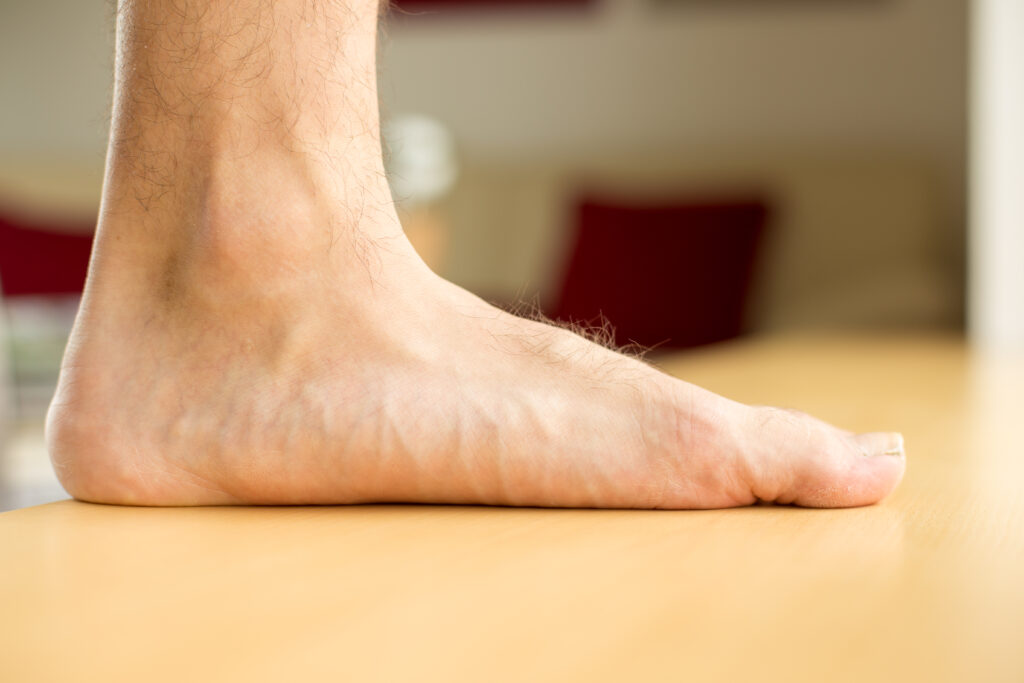Flatfeet

Flat feet
Most people have a space under the arch or instep of the foot when they stand, although the depth of this space can vary. You may notice that young children’s feet often look a little flat; this is usually totally normal and they rarely need treatment unless their feet are stiff, as the arch tends to develop by the age of nine or 10 years old.
Is it normal?
Some people have a naturally flat foot, with both feet the same shape, which doesn’t cause them any problems. However, if only one foot is affected (causing pain) or it has changed shape over a few months, and if you previously had normal arches, you may need treatment. It can be caused by a problem with the tendon that supports the arch or arthritis in the joints around the heel.
What causes it?
Having a flat foot can be caused by a number of factors, including:
- Tarsal coalition, a childhood condition that is an abnormal fusing of some foot bones which makes the foot stiffer and quite flat
- Tibialis posterior tendon dysfunction
- Arthritis in the hind or mid foot. This may be caused by an injury or develop without an obvious explanation
It is important to seek medical advice as soon as possible as the longer it’s left, the more difficult the condition is to treat successfully.
What are the symptoms?
You may experience a variety of symptoms:
- Walking or running can be painful, especially along the inside border of the foot and ankle
- Swelling on the inside of the ankle
- Tingling or numbness can develop on the inside or sole of the foot because the nerve along the inside of the ankle may be slightly stretched or compressed
Can it become worse?
Yes. If the cause is a simple tendon abnormality causing the foot to flatten then it can be helped with insoles and physiotherapy to help strengthen and support the arch. However, if the foot is left untreated then it can become arthritic and the flat foot can be quite stiff and impossible to correct with insoles. It’s important to seek advice as soon as possible because the sooner the condition is diagnosed, the easier it is to treat.
How is it diagnosed?
You will be given a medical examination, backed up by X-rays that display the overall shape of the flat foot and can help to diagnose arthritis. You may also be offered an MRI scan to check whether the tendon is working normally and if there are any other problems.
How is it treated?
If the foot is flat but flexible then you may be able to have treatment with simple insoles and physiotherapy. Although this stops it becoming worse, it may not be satisfactory for a more active person, who may need corrective surgery to re-form the arch.
If the foot becomes very stiff and the arch is flat and rigid, possibly as a result of arthritis, it can become quite painful. You may be offered specially made shoes that fit your foot but don’t change its shape. However, if this is not suitable, then flat foot reconstruction surgery or foot fusion surgery to stiffen the back of the foot and relieve pain can be performed. If the problem is caused by tendon problems, you may need an operation to transfer a tendon to reinforce the weak one.
Important: This information is only a guideline to help you understand your treatment and what to expect. Everyone is different and your rehabilitation may be quicker or slower than other people’s. Please call us for advice if you’re worried about any aspect of your health or recovery.